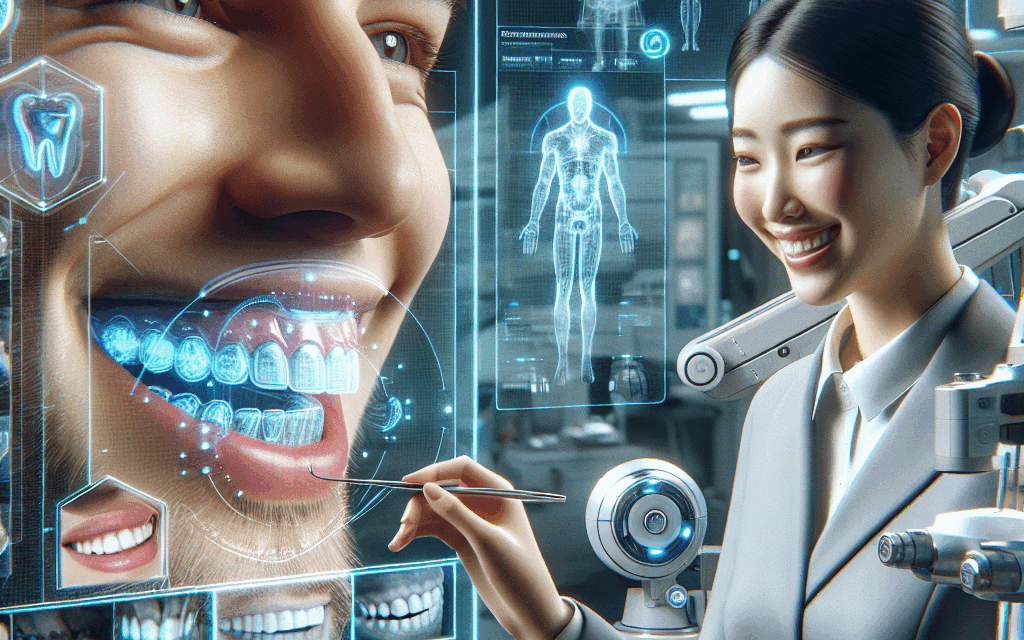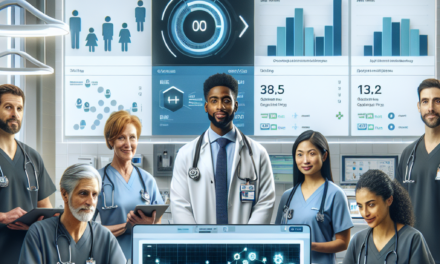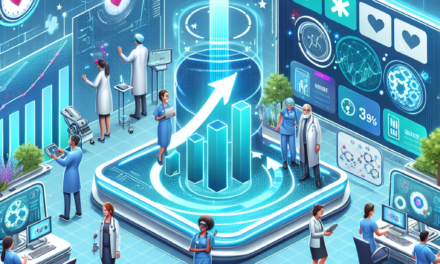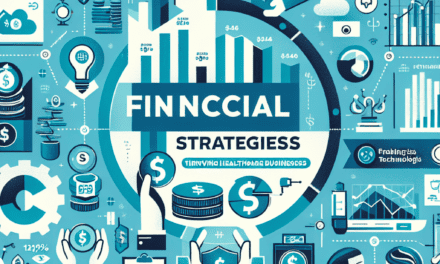Revolutionizing Dental Care: The Impact of Cutting-Edge Technology on Patient Smiles
The field of dentistry has undergone a remarkable transformation over the past few decades, driven by advancements in technology that have revolutionized patient care. From digital imaging to robotic-assisted surgeries, these innovations have not only improved the efficiency of dental practices but have also enhanced the overall patient experience. This article explores the various ways cutting-edge technology is reshaping dental care, focusing on five key areas: digital imaging and diagnostics, 3D printing in dentistry, tele-dentistry, artificial intelligence in treatment planning, and patient engagement through technology.
1. Digital Imaging and Diagnostics
Digital imaging has become a cornerstone of modern dentistry, replacing traditional film-based radiography with advanced digital techniques that offer numerous advantages. This section delves into the various forms of digital imaging, their benefits, and their impact on patient care.
1.1 The Evolution of Dental Imaging
Traditional dental X-rays have been a staple in diagnostics for decades, but they come with limitations such as longer exposure times and the need for chemical processing. Digital imaging technologies, including digital radiography and cone beam computed tomography (CBCT), have emerged as superior alternatives. Digital radiography uses electronic sensors to capture images, significantly reducing radiation exposure and providing instant results. CBCT, on the other hand, offers three-dimensional images that allow for more accurate assessments of dental structures.
1.2 Benefits of Digital Imaging
- Reduced Radiation Exposure: Digital X-rays emit up to 90% less radiation compared to traditional methods, making them safer for patients.
- Instant Results: Dentists can view images immediately, facilitating quicker diagnosis and treatment planning.
- Enhanced Image Quality: Digital images can be manipulated for better clarity, allowing for more accurate diagnoses.
- Environmentally Friendly: The elimination of chemical processing reduces waste and environmental impact.
1.3 Case Studies and Statistics
A study published in the Journal of the American Dental Association found that practices using digital radiography reported a 30% increase in diagnostic accuracy. Additionally, a survey conducted by the American Dental Association revealed that 75% of dentists believe digital imaging has improved patient communication and education. These statistics underscore the significant role digital imaging plays in enhancing patient care.
1.4 Patient Experience and Comfort
Digital imaging not only improves diagnostic capabilities but also enhances the patient experience. The ability to show patients their images in real-time fosters transparency and trust. Patients are more likely to understand their dental conditions and treatment options when they can visualize them. This engagement leads to higher satisfaction rates and better treatment adherence.
1.5 Future Trends in Digital Imaging
As technology continues to evolve, the future of digital imaging in dentistry looks promising. Innovations such as augmented reality (AR) and artificial intelligence (AI) are set to further enhance diagnostic capabilities. For instance, AR can overlay digital images onto a patient’s mouth during procedures, providing real-time guidance for dentists. These advancements will likely lead to even more precise treatments and improved patient outcomes.
2. 3D Printing in Dentistry
3D printing technology has made significant inroads into various industries, and dentistry is no exception. This section explores how 3D printing is being utilized in dental practices, its benefits, and its implications for patient care.
2.1 Understanding 3D Printing Technology
3D printing, or additive manufacturing, involves creating three-dimensional objects from digital files. In dentistry, this technology is used to produce a wide range of items, including crowns, bridges, dentures, and even surgical guides. The process begins with a digital scan of the patient’s mouth, which is then used to create a precise model for printing.
2.2 Advantages of 3D Printing in Dentistry
- Customization: 3D printing allows for the creation of highly customized dental appliances tailored to the unique anatomy of each patient.
- Speed: The production of dental devices can be completed in a fraction of the time compared to traditional methods, reducing wait times for patients.
- Cost-Effectiveness: By streamlining the manufacturing process, 3D printing can lower costs for both dental practices and patients.
- Reduced Waste: Additive manufacturing minimizes material waste, making it a more sustainable option.
2.3 Case Studies and Real-World Applications
Numerous dental practices have successfully integrated 3D printing into their workflows. For example, a dental clinic in California reported a 50% reduction in turnaround time for custom crowns after adopting 3D printing technology. Another case study highlighted a dental lab that used 3D printing to produce surgical guides for implant placements, resulting in a 30% increase in accuracy during procedures.
2.4 Patient Benefits and Satisfaction
The impact of 3D printing on patient care is profound. Patients benefit from faster treatment times, reduced discomfort, and improved fit of dental appliances. The customization offered by 3D printing ensures that patients receive devices that are not only functional but also aesthetically pleasing. This level of personalization enhances patient satisfaction and encourages positive treatment experiences.
2.5 The Future of 3D Printing in Dentistry
As 3D printing technology continues to advance, its applications in dentistry are expected to expand. Future developments may include bioprinting, where living cells are used to create dental tissues, and the integration of AI to optimize the design process. These innovations hold the potential to further revolutionize dental care and improve patient outcomes.
3. Tele-Dentistry: Expanding Access to Care
Tele-dentistry has emerged as a vital tool in expanding access to dental care, particularly in underserved areas. This section examines the role of tele-dentistry in modern dental practices, its benefits, and its impact on patient care.
3.1 What is Tele-Dentistry?
Tele-dentistry involves the use of digital communication technologies to provide dental care remotely. This can include virtual consultations, remote monitoring of dental conditions, and follow-up care. Tele-dentistry has gained traction, especially during the COVID-19 pandemic, as it allows patients to receive care without the need for in-person visits.
3.2 Benefits of Tele-Dentistry
- Increased Accessibility: Tele-dentistry breaks down geographical barriers, allowing patients in remote areas to access dental care.
- Convenience: Patients can schedule virtual appointments from the comfort of their homes, reducing travel time and associated costs.
- Continuity of Care: Tele-dentistry facilitates ongoing communication between patients and dental professionals, ensuring better management of dental conditions.
- Cost Savings: Virtual consultations can be more affordable than traditional in-office visits, making dental care more accessible to a broader population.
3.3 Case Studies and Implementation
Several dental practices have successfully implemented tele-dentistry programs. For instance, a dental clinic in Texas reported a 40% increase in patient engagement after introducing virtual consultations. Another study found that tele-dentistry was effective in managing orthodontic cases, with 85% of patients reporting satisfaction with the remote monitoring process.
3.4 Challenges and Considerations
While tele-dentistry offers numerous benefits, it also presents challenges. Issues such as technology access, patient privacy concerns, and the need for regulatory compliance must be addressed. Dental professionals must ensure that they are equipped to provide quality care remotely and that patients are comfortable using the technology.
3.5 The Future of Tele-Dentistry
The future of tele-dentistry looks promising, with advancements in technology likely to enhance its effectiveness. Innovations such as AI-driven diagnostic tools and improved telecommunication platforms will further streamline remote care. As tele-dentistry becomes more integrated into dental practices, it has the potential to transform how patients access and receive dental care.
4. Artificial Intelligence in Treatment Planning
Artificial intelligence (AI) is making significant strides in various fields, including healthcare. In dentistry, AI is being utilized to enhance treatment planning and improve patient outcomes. This section explores the role of AI in dental care, its benefits, and its implications for patient treatment.
4.1 Understanding AI in Dentistry
AI refers to the simulation of human intelligence in machines programmed to think and learn. In dentistry, AI algorithms analyze vast amounts of data to assist in diagnosis, treatment planning, and patient management. These technologies can identify patterns and predict outcomes, enabling dentists to make more informed decisions.
4.2 Benefits of AI in Treatment Planning
- Enhanced Diagnostic Accuracy: AI can analyze radiographs and other diagnostic images with high precision, reducing the risk of human error.
- Personalized Treatment Plans: AI algorithms can consider individual patient data to create tailored treatment plans that optimize outcomes.
- Efficiency: AI can streamline administrative tasks, allowing dental professionals to focus more on patient care.
- Predictive Analytics: AI can forecast potential complications or treatment failures, enabling proactive interventions.
4.3 Case Studies and Real-World Applications
Several dental practices have begun integrating AI into their workflows. For example, a dental clinic in New York implemented an AI-powered diagnostic tool that improved the accuracy of cavity detection by 25%. Another study demonstrated that AI-assisted treatment planning reduced the time required for orthodontic assessments by 30%, leading to faster patient care.
4.4 Patient Outcomes and Satisfaction
The integration of AI in treatment planning has shown promising results in improving patient outcomes. Patients benefit from more accurate diagnoses, personalized treatment plans, and reduced treatment times. As a result, patient satisfaction levels have increased, with many reporting a greater sense of confidence in their care.
4.5 The Future of AI in Dentistry
The future of AI in dentistry is bright, with ongoing research and development expected to yield even more advanced applications. As AI technology continues to evolve, its integration into dental practices will likely become more widespread, leading to improved patient care and outcomes.
5. Patient Engagement Through Technology
Engaging patients in their dental care is crucial for achieving positive outcomes. Technology plays a vital role in enhancing patient engagement, from appointment scheduling to educational resources. This section explores how technology is transforming patient engagement in dentistry.
5.1 The Importance of Patient Engagement
Patient engagement refers to the involvement of patients in their own healthcare decisions and processes. In dentistry, engaged patients are more likely to adhere to treatment plans, attend regular check-ups, and maintain good oral hygiene practices. Technology can facilitate this engagement by providing patients with the tools and resources they need to take an active role in their care.
5.2 Technology-Driven Engagement Strategies
- Patient Portals: Online portals allow patients to access their health records, schedule appointments, and communicate with their dental team.
- Mobile Apps: Dental practices are increasingly using mobile apps to send reminders, provide educational content, and track patient progress.
- Social Media: Dental practices can use social media platforms to share educational content, engage with patients, and promote oral health awareness.
- Virtual Reality: Some practices are exploring virtual reality as a tool for patient education, allowing patients to visualize procedures and understand their benefits.
5.3 Case Studies and Success Stories
A dental practice in Florida implemented a patient portal that resulted in a 60% increase in appointment attendance. Another study found that practices using mobile apps for patient engagement reported higher satisfaction rates, with 90% of patients expressing a desire for continued use of the app for communication and education.
5.4 Overcoming Barriers to Engagement
While technology offers numerous opportunities for patient engagement, barriers such as technological literacy and access must be addressed. Dental practices should provide training and support to help patients navigate digital tools effectively. Additionally, practices should ensure that technology is accessible to all patients, regardless of their socioeconomic status.
5.5 The Future of Patient Engagement in Dentistry
The future of patient engagement in dentistry will likely be shaped by ongoing technological advancements. As new tools and platforms emerge, dental practices will have more opportunities to connect with patients and foster engagement. This shift will ultimately lead to improved patient outcomes and a more positive dental experience.
Conclusion
The integration of cutting-edge technology in dental care is revolutionizing the way patients experience oral health services. From digital imaging and 3D printing to tele-dentistry and AI-driven treatment planning, these advancements are enhancing diagnostic accuracy, improving treatment outcomes, and increasing patient engagement. As technology continues to evolve, the future of dentistry looks promising, with the potential for even greater innovations that will further improve patient smiles.
In summary, the impact of technology on dental care is profound and multifaceted. By embracing these advancements, dental professionals can provide higher quality care, foster better patient relationships, and ultimately contribute to healthier smiles for all. As we move forward, it is essential for dental practices to stay informed about emerging technologies and adapt their approaches to meet the evolving needs of their patients.





